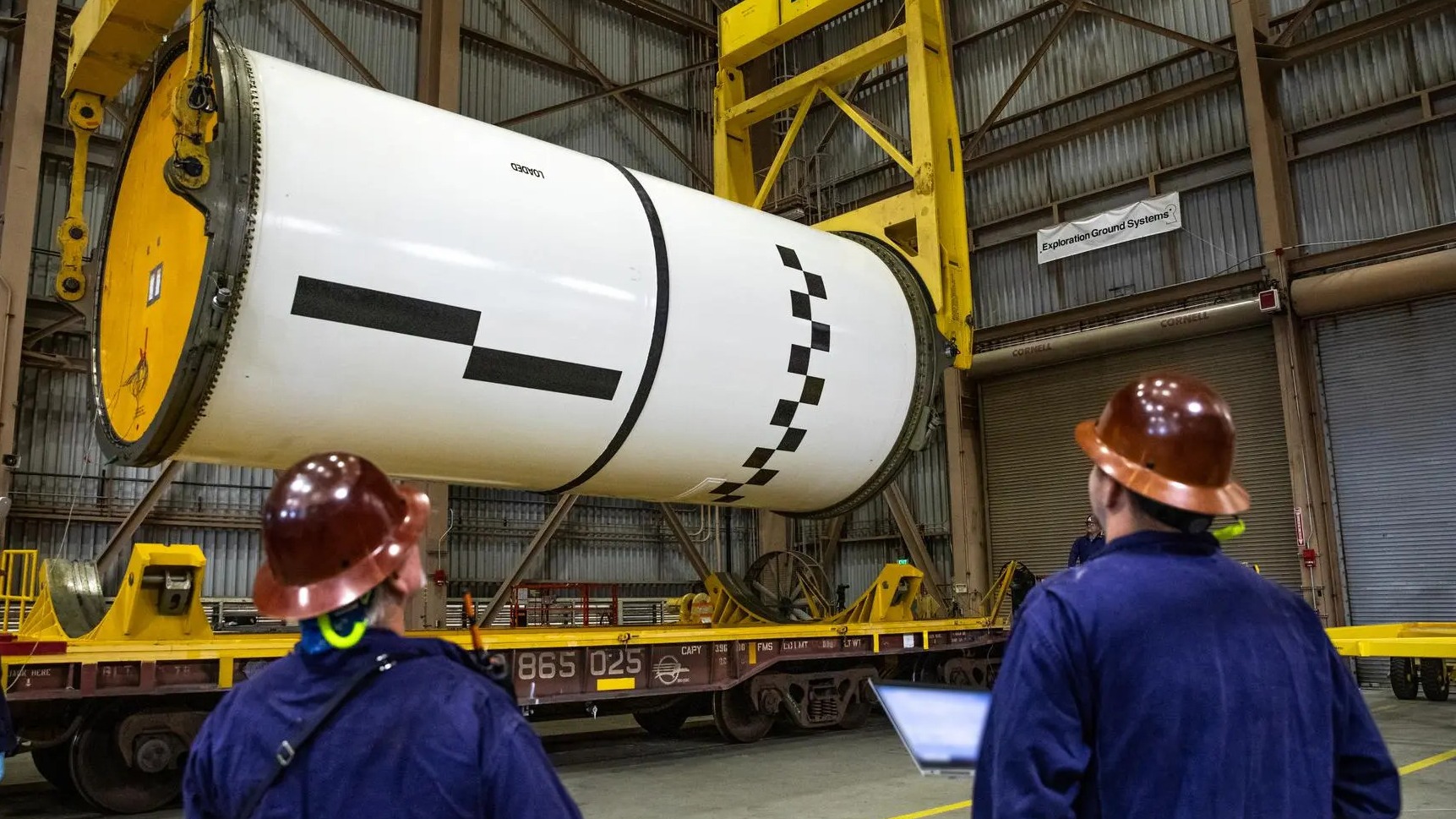
The giant rocket that will launch humanity's next crewed moon mission is coming together across the southern United States.
NASA plans to launch its Artemis 2 mission, which will send four astronauts around the moon, in late 2024. As the crew gets deep into their training, the hardware that will carry them to space — the Orion capsule and giant Space Launch System (SLS) rocket — is being readied at different NASA centers.
For example, parts of the two solid rocket boosters that will be strapped to the SLS core stage are being processed at NASA's Kennedy Space Center (KSC) in Florida, the site from which Artemis 2 will launch.
And in late November, engineers at KSC processed the right forward center segment of the SLS, NASA announced on Dec. 8. "The team has been inspecting each segment one-by-one, and lifting them to a vertical position to ensure the solid propellant and segment are ready for integration and launch," officials wrote.
There are 10 segments to examine. After these pieces have been approved, they will be driven over to KSC's Vehicle Assembly Building (VAB) to meet up with the mobile launcher that supports SLS at the pad. In the VAB, the massive rocket will then be put together for the Artemis 2 launch, which will be the first lunar liftoff with humans on board in 52 years.
Related: 1 year after Artemis 1 launch, NASA readies Artemis 2 to shoot for the moon again (video)
Meanwhile, at NASA's Marshall Space Flight Center in Huntsville, Alabama, team members worked on a key piece that will support the Artemis 2 Orion spacecraft. Technicians rotated the stage adapter, which will connect Orion to the SLS upper stage (known as the interim cryogenic propulsion stage, or ICPS).
"The installation Nov. 30 marks one of the final steps for the adapter before it is readied for shipment to Kennedy via NASA's Super Guppy cargo aircraft," NASA officials wrote in a separate release on Monday (Dec. 11).
The adapter also bears the autographs of the four crew members, who visited in November: NASA commander Reid Wiseman, NASA pilot Victor Glover (who will become the first Black person to leave low Earth orbit, or LEO), NASA mission specialist Christina Koch (who will be the first woman to go beyond LEO) and Canadian Space Agency astronaut Jeremy Hansen (the first non-American to do so).
In recent weeks, NASA has also released milestones for other key hardware for the mission. The Orion spacecraft finished its first power-on test at KSC, while the core stage of the SLS now has all four engines on board at its facility at Michoud.
The mobile launcher is undergoing months of tests, including spectacular water deluge testing that is key to protecting the structure from the forces of the powerful launch.
Artemis 2's crew continues its 18 months of training, in which the astronauts are formulating procedures as they go, to make way for future Artemis program missions. The following mission, Artemis 3, is officially set for 2025 or 2026 but will likely push to 2027, a recent Government Accountability Office (GAO) report said. NASA is still awaiting key landing elements such as SpaceX's giant new Starship vehicle (which has yet to complete a space mission) and spacesuits for the lunar surface.







